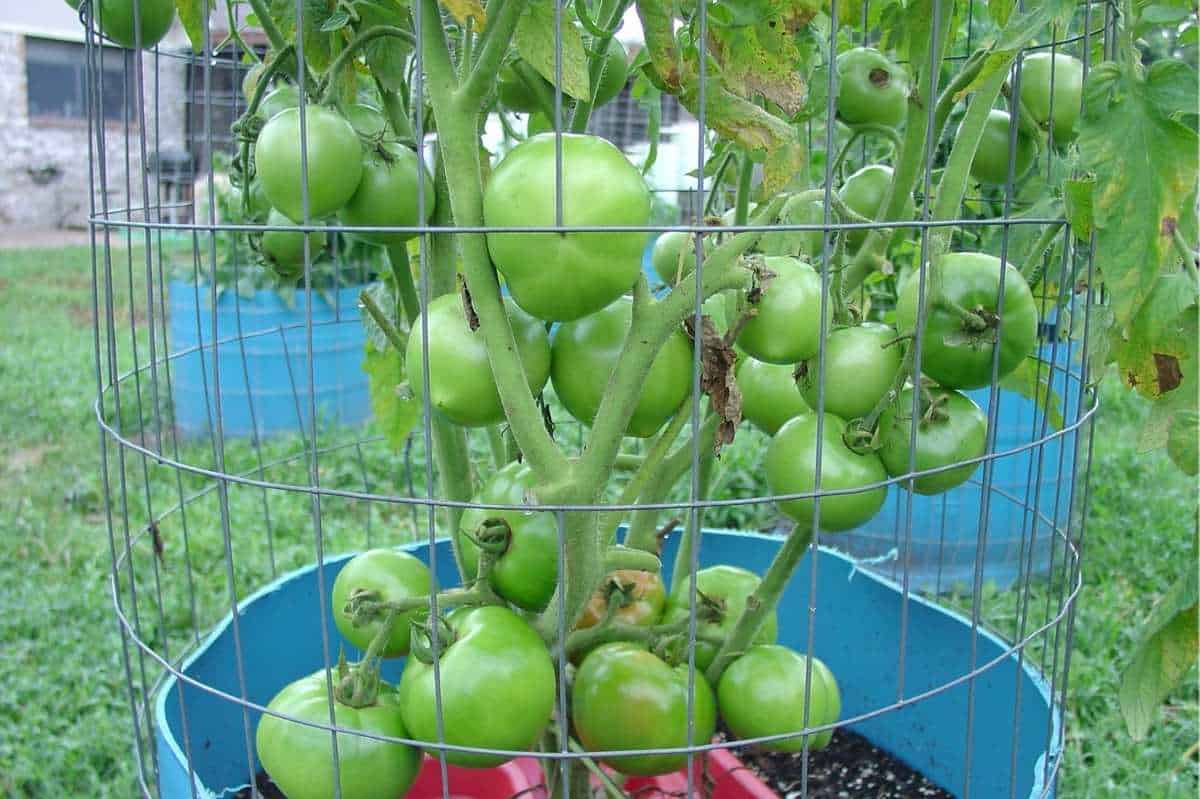When it comes to growing tomatoes in your backyard veggie patch, there are two main types you’ll come across: determinate vs indeterminate. But what do these terms really mean, and how do they affect your gardening experience? Let’s find out!
What are determinate tomatoes?
Think of determinate tomatoes as compact, bushy type of tomato plants. They grow to a certain height, usually around 2 to 3 feet, and then they stop growing upward, making them a great option for folks low on space. Determinate tomatoes also tend to produce all their fruit in a short period of time, making them ideal for those who want a harvest and use the tomatoes all at once (like say if you want to can tomatoes).
Growfully Protip
If you’re new to gardening or have a small garden, determinate tomatoes might be a good place to start thanks to their smaller footprint. Determinate tomatoes are also great for container and patio growing!

What are indeterminate tomatoes?
Indeterminate tomatoes are the wild-child, vine-like tomatoes that just keep on growing and producing fruit until the first frost hits. This growth habit means they can reach towering heights (especially in areas with longer growing seasons), sometimes up to 8 feet or more!
Indeterminate tomatoes require some support to keep them from sprawling all over the place, have ample airflow, and prevent disease and breaking. Indeterminates also tend to require more pruning that determinate tomatoes. Indeterminate tomatoes are perfect for gardeners who have ample space and enjoy a continuous harvest throughout the season, but don’t mind a little more care.
Growfully Protip
Many home gardeners prune their indeterminate tomato plants to increase yield and help prevent disease that is caused by poor circulation. To do this, pinch off any “suckers” (the side shoots the grow in the crotch between the main stem and a branch of the the plant). This will help the indeterminate plants vine upward instead of becoming a sprawling, tangled mess.
So which is best?
Which you grow really depends on your goals, your space, and the length of your growing season. In the Growfully gardens, we tend to grow both! We grow some determinates to get us a quick burst of early tomatoes, and then some heirloom indeterminates to extend the harvest and get us a lot of variety in flavor and color.
It comes down to this: if you’re short on space or want a quick harvest, go for determinate tomatoes. If you have plenty of room to spare and love the idea of a continuous supply of fresh tomatoes throughout the season, indeterminate varieties are the way to go.

How do you know the difference between determinate vs indeterminate tomatoes?
The seed packet or plant tag should tell you if the variety is determinate or indeterminate. But if it doesn’t, a quick Google search of the tomato variety will clue you in.
What’s the best what to support both kinds?
Both determinate and indeterminate tomatoes benefit from some form of trellising or support system. For determinate varieties, a simple tomato cage or stake should do the trick. Since they don’t grow too tall, they won’t need much support to keep them upright.
Indeterminate tomatoes, on the other hand, require a bit more TLC when it comes to support. You can use sturdy stakes or tall cages to help keep their sprawling vines in check. Some gardeners even use a trellis or string supports to train the vines upwards, saving space and making harvesting easier.

What are some good varieties of each?
Here are some recommendations for each type that we like in the Growfully Gardens:
Determinate tomatoes:
- Roma (AKA: San Marzano): Perfect for tomato sauces, salsa, and canning tomatoes, these plum-shaped tomatoes are a kitchen staple. And since they come off all around the same time, you can get all your canning all at once.
- Bush Early Girl: An early ripening variety that’s great for beginners and small spaces. You’ll have the earliest tomatoes on the block!
Indeterminate tomatoes:
- Sungold: These tiny golden tomatoes are are absolute favorite of all the cherry tomatoes we’ve ever tried! Sweet like candy and increidbly prolific, we grow them every year.
- Pink Brandywine: These huge pink slicer tomatoes are packed full of flavor. Plus the tomato leaves have a unique shape that gives lots of interest in the garden!
- Black Krim/Cherokee Purple: These two varieties are very similar in taste, color, texture, and size. We recommed everyone grows one of the two. Which one depends on your garden and your region—pick the one that thrives where you live!
- Big Boy/Big Beef/Better Boy: These classic red slicer tomatoes (AKA: beefsteaks) are what you want to have on hand when you go to top a burger!







